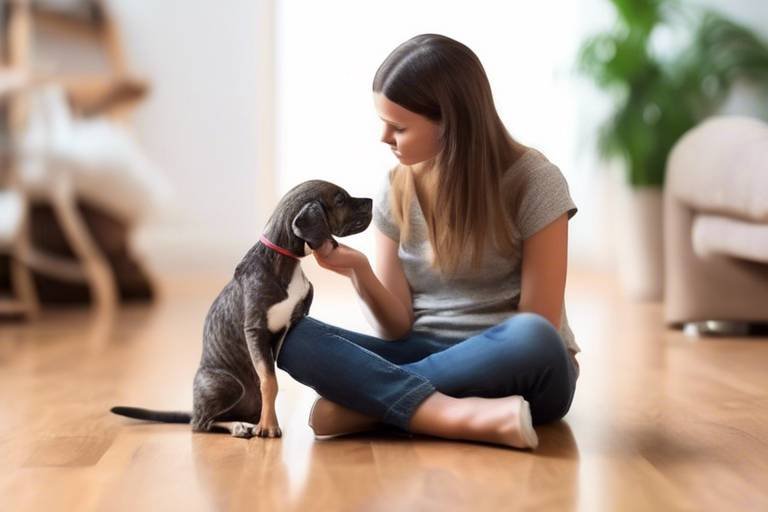Understanding Pet Behavior - Common Myths and Truths
When it comes to our furry companions, there’s a lot we think we know about their behavior. However, many of these beliefs are steeped in misconceptions. Understanding the nuances of pet behavior is essential for every pet owner who wants to foster a loving and healthy relationship with their animal. In this article, we’ll dive deep into some of the most common myths surrounding pet behavior, debunk them, and provide you with the factual insights you need to better understand your beloved companions. Whether you have a playful pup or a cuddly cat, recognizing the truths behind their actions will not only enhance your bond but also lead to a happier, more fulfilling life for both of you.
One of the most prevalent myths among pet owners is the belief that pets misbehave out of spite. Many people think that their pets intentionally knock over a vase or chew on shoes to get back at them. However, this couldn’t be further from the truth! Pets do not possess the same emotional reasoning as humans. They don’t have the capacity to hold grudges or act with malice. Instead, pets often act out due to stress, boredom, or unmet needs. For example, a dog may chew furniture out of anxiety or lack of exercise, while a cat might scratch the couch because it lacks appropriate outlets for its energy. Understanding the root causes of these behaviors can help owners address them more effectively.
It’s a common stereotype that cats are solitary creatures who prefer to be left alone. However, this myth overlooks the complex social nature of felines. In reality, cats can be incredibly affectionate and social, often forming strong bonds with their owners. They express their emotions in various ways, from gentle headbutts to soft purring. Recognizing these behaviors can help you understand your cat's love language better.
When it comes to feline affection, there are several telltale signs that indicate your cat loves you. For instance, when a cat kneads with its paws, it’s a sign of comfort and contentment. Additionally, the classic purring sound is often a cat’s way of expressing happiness. Understanding these behaviors can enrich your relationship with your pet.
Engaging in playtime with your cat is crucial for establishing a strong bond. Play mimics natural hunting behaviors and enhances trust between you and your feline friend. Consider incorporating interactive toys or laser pointers into your routine to keep your cat active and engaged.
How can you tell if your cat is happy? Look for relaxed body language, such as a tail held high or slow blinking. Vocalizations, like soft meows or purrs, also indicate contentment. By recognizing these signs, you can ensure your cat feels safe and loved in your home.
Socializing your cat from a young age is essential for fostering friendly and confident behaviors in adulthood. Introducing your kitten to various people, pets, and environments can help them grow into well-adjusted adults. Remember, a well-socialized cat is generally happier and less prone to behavioral issues.
While it’s true that dogs are eager to please, their motivations are often more complex than simple obedience. Dogs are driven by a mix of instincts, training, and emotional needs. For example, a dog may perform a trick not just to please its owner but also because it enjoys the activity or is motivated by treats. Understanding this balance can lead to more effective training and a deeper connection with your canine companion.
Dogs have natural instincts that influence their behavior, including herding, hunting, and guarding. These instincts can sometimes conflict with their desire to please. For instance, a herding breed may try to herd children or other pets, which can be misinterpreted as misbehavior. Recognizing these instincts helps owners manage their dogs more effectively.
Effective training methods are vital for enhancing a dog's ability to understand commands and expectations. A well-trained dog is not only a joy to be around but also contributes to a harmonious relationship between pet and owner. Consistent training sessions that focus on positive reinforcement can lead to lasting results.
Aggression in pets is often misunderstood. Many people assume that aggressive behavior is inherent in certain breeds or species, but this is not the case. Aggression can stem from fear, territoriality, or lack of socialization. Understanding the underlying causes of aggressive behavior is key to addressing and managing it effectively.
Recognizing what triggers aggressive behavior in pets can help owners manage and modify these responses. Common triggers include loud noises, unfamiliar people, or other animals. By identifying these triggers, you can create a safer environment for everyone.
There are various techniques for modifying aggressive behavior in pets, with a focus on positive reinforcement and consistent training practices. For example, rewarding calm behavior and redirecting aggression can lead to better outcomes. Remember, patience and understanding are essential in this process.
Many people believe that pets are emotionless creatures, but research has shown that they can experience a range of feelings, including joy, fear, and even jealousy. Understanding your pet's emotional life can deepen your bond and improve your care practices.
Dogs exhibit a variety of emotions that can be observed through their behavior. For instance, excitement during play can indicate happiness, while anxiety during stressful situations can reveal fear. Learning to interpret these emotional cues can help you respond appropriately to your pet's needs.
To better understand your pet's emotional state, pay attention to their body language and vocalizations. A wagging tail might indicate excitement, while a tucked tail could signal fear. By being attentive to these signals, you can foster a more supportive environment for your pet.
Age should not be a barrier to learning! Many people believe that older pets are set in their ways and cannot learn new skills or behaviors. However, with patience and the right approach, older pets can still acquire new tricks and commands.
Training older pets can enhance their mental stimulation and strengthen the bond between owner and pet. It’s a rewarding experience for both parties and can lead to a more fulfilling life together.
When teaching older pets, focus on positive reinforcement and shorter training sessions to maintain their interest. Remember, the goal is to make learning fun and engaging!
While pets often form strong bonds with their owners, factors like stress or environmental changes can affect their recognition and behavior. For example, a pet may become confused or anxious after a move or the arrival of a new family member.
Changes in environment can significantly influence a pet's behavior and recognition of their owner. They may display signs of confusion or anxiety during such transitions. Being aware of this can help you provide the support they need.
To help pets adjust to changes in their lives, consider using familiar scents, routines, and gentle reassurances. This can help them feel secure and recognized in their home environment.
Every pet is unique! It's essential to recognize that different breeds and personalities affect behavior and care needs. Understanding these differences can lead to better care and training practices.
Different breeds have unique traits that influence their needs and interactions with humans and other animals. For instance, herding breeds may require more exercise and mental stimulation than others. Recognizing these traits can help you tailor your care approach.
Every pet has its personality, and understanding these traits is crucial for providing the best care. Some pets may be more social, while others may prefer solitude. By recognizing these differences, you can create a more enriching environment for your pet.
Mental stimulation is crucial for pets' well-being. Many owners underestimate the importance of keeping their pets engaged and mentally healthy. Without proper stimulation, pets can become bored, leading to behavioral issues.
Engaging pets in enrichment activities, such as puzzle toys, interactive play, and training exercises, can prevent boredom and reduce undesirable behaviors. These activities not only keep pets mentally sharp but also provide an outlet for their energy.
Creating an environment that encourages exploration and engagement is essential for your pet's happiness. Consider incorporating climbing structures for cats or obstacle courses for dogs to keep them active and entertained.
Q: Can pets feel emotions like humans?
A: Yes, pets can experience a range of emotions, including joy, fear, and affection.
Q: How can I tell if my pet is happy?
A: Look for signs like relaxed body language, purring (in cats), or wagging tails (in dogs).
Q: Is it too late to train my older pet?
A: No, older pets can learn new tricks with patience and positive reinforcement.
Q: How can I help my pet adjust to a new environment?
A: Use familiar scents and routines to help them feel secure and recognized.
Q: Do all pets need mental stimulation?
A: Absolutely! Mental stimulation is essential for preventing boredom and promoting overall well-being.

Myth 1: Pets Only Act Out of Spite
Many pet owners often find themselves in a perplexing situation when their furry friends exhibit behaviors that seem downright mischievous or defiant. It's easy to jump to the conclusion that our pets are acting out of spite, especially when they knock over a plant or chew on a favorite shoe. However, this notion is not only misleading but also overlooks the complex emotional and psychological landscape of our beloved companions. Pets do not possess the same emotional reasoning as humans, and therefore, they do not act with intent to hurt or annoy us. Instead, their actions are often responses to stress, anxiety, or unmet needs.
For instance, if a dog barks excessively or a cat scratches the furniture, these behaviors can often be traced back to underlying issues such as boredom, lack of exercise, or even medical problems. Just like us, pets have their own ways of communicating discomfort or dissatisfaction. They might not have the vocabulary to express their feelings, but their actions speak volumes. Understanding this can transform how we interact with our pets and help us respond more effectively to their needs.
To illustrate this point, consider the following common reasons why pets may misbehave:
- Stress and Anxiety: Changes in the household, such as moving to a new home or the arrival of a new family member, can trigger anxiety in pets. This can lead to behaviors that seem spiteful but are actually cries for help.
- Unmet Needs: Pets require physical and mental stimulation. A bored pet is more likely to engage in destructive behaviors. Regular playtime and exercise can mitigate these issues.
- Health Problems: Sometimes, what appears to be spiteful behavior can stem from pain or medical issues. A visit to the vet can rule out any health concerns.
By recognizing these triggers, pet owners can take proactive steps to address the root causes of their pets' behaviors rather than attributing them to spite. For example, if your dog is chewing on furniture, it might be a sign they need more exercise or mental engagement rather than a personal vendetta against your belongings. Similarly, if your cat is acting out, it may be a signal that they need more interactive playtime or a safe space to retreat to when they feel overwhelmed.
In conclusion, understanding that pets do not act out of spite but rather in response to their environment can lead to a more harmonious relationship between pet and owner. By observing and interpreting your pet's behavior through this lens, you can foster a deeper bond and create a more nurturing environment. Remember, our pets rely on us to meet their needs, and by doing so, we can help them feel secure and loved.

Myth 2: Cats Are Aloof
Contrary to the common belief that cats are aloof and indifferent, the truth is that these furry companions are capable of deep emotional connections with their owners. Many people perceive cats as solitary creatures, but this stereotype fails to capture the rich tapestry of their social behaviors. Just like humans, cats have unique personalities and ways of expressing affection. Understanding these behaviors can transform your relationship with your feline friend.
One of the primary reasons people think cats are aloof is due to their independent nature. Unlike dogs, who often seek constant validation and companionship, cats are more self-sufficient. They may not follow you around the house or greet you at the door with uncontainable excitement, but that doesn't mean they don't care. In fact, many cats show their affection in more subtle ways that might go unnoticed. For instance, when a cat decides to sit on your lap or rub against your leg, it's not just looking for warmth; it's expressing trust and love.
To truly appreciate the affection that cats can offer, it's essential to recognize their unique love languages. Here are some behaviors that indicate a cat's affection:
- Purring: This soothing sound is often a sign of contentment and affection. If your cat purrs when you're close, take it as a compliment!
- Kneading: When cats knead with their paws, it’s a behavior that stems from kittenhood, symbolizing comfort and happiness.
- Slow Blinking: If your cat looks at you and slowly closes its eyes, it’s akin to a feline kiss. This gesture signifies trust and love.
These behaviors highlight that while cats may not be as overtly affectionate as dogs, they have their own unique ways of showing love. Recognizing these signs can help you build a stronger bond with your cat.
Engaging in playtime is crucial for establishing a strong bond with your cat. Play mimics natural hunting behaviors and allows cats to express their instincts. When you toss a feather toy or engage in a game of chase, you're not just providing entertainment; you're also fostering trust and connection. It's a shared experience that strengthens your relationship and keeps your cat mentally stimulated.
Wondering if your cat is happy? Look for these signs:
- Relaxed Body Language: A happy cat will have a relaxed posture, with its tail held high and ears facing forward.
- Vocalizations: While some cats are naturally quiet, a cat that chirps or meows at you is likely trying to communicate and engage.
- Grooming: Cats that groom themselves regularly are generally content and healthy.
Understanding these signs can help you create an environment where your cat feels safe and loved. Remember, just because your cat isn’t always in your face doesn’t mean it doesn’t cherish your presence.
Socializing cats from a young age is vital for fostering friendly and confident behaviors in adulthood. Kittens that are exposed to various people, environments, and other animals are more likely to develop into well-adjusted adults. If you adopt an older cat, it’s never too late to help them socialize. Patience and gentle introductions can make a world of difference. Remember, every cat is unique, and their comfort levels will vary, so take it slow and let them guide the process.
In conclusion, the myth that cats are aloof is a misconception that overlooks the depth of their emotional lives. By recognizing their unique ways of showing affection, engaging in play, and understanding their social needs, you can foster a loving and fulfilling relationship with your feline companion.
Q: Why do cats sometimes ignore me?
A: Cats are naturally independent creatures. They may choose to spend time alone or engage in their own activities. This doesn’t mean they don’t care; they just have different social needs than dogs.
Q: How can I tell if my cat loves me?
A: Look for signs like purring, kneading, slow blinking, and following you around. If your cat seeks your company and engages in play, it’s a good indication of affection.
Q: Can I train my cat to be more affectionate?
A: While you can’t change a cat’s personality, you can encourage affectionate behavior through positive reinforcement, playtime, and creating a comfortable environment.
Understanding Feline Affection
When it comes to our furry friends, cats often get a bad rap for being distant or aloof. However, the truth is that cats are incredibly complex creatures with their own unique ways of showing affection. Unlike dogs, who may greet you with a wagging tail and slobbery kisses, cats express their love in more subtle, yet equally meaningful ways. It's essential for pet owners to understand these behaviors to strengthen their bond with their feline companions.
One of the most common ways cats show affection is through purring. This soothing sound is often associated with contentment, but it can also indicate that a cat feels safe and loved. When your cat curls up next to you and begins to purr, it's their way of saying, "I trust you." Additionally, cats may engage in kneading, a behavior that resembles the motion of kneading dough. This action is a remnant of kittenhood, where they kneaded their mother's belly to stimulate milk flow. When your cat kneads on you, it’s a sign of comfort and affection, much like a warm hug.
Another fascinating aspect of feline affection is their head-butting behavior, also known as "bunting." When your cat bumps their head against you, they are not just being playful; they are marking you with their scent, claiming you as part of their territory. This behavior signifies trust and affection, and it shows that your cat feels secure in your presence. Similarly, when a cat follows you around the house, it’s a clear indication that they enjoy your company and want to be near you.
Moreover, slow blinking is another affectionate gesture that many cat owners might overlook. When a cat looks at you and slowly closes its eyes, it’s akin to a cat kiss. You can even return the gesture by slowly blinking back at your cat. This simple act can strengthen your bond and help your cat feel more secure in your relationship.
Playtime also plays a crucial role in how cats express their affection. Engaging in interactive play not only mimics their natural hunting instincts but also fosters a sense of trust and companionship. Whether it's a feather wand or a laser pointer, the time spent playing together can deepen the emotional connection between you and your cat. Remember, a happy cat is often an affectionate cat, so make sure to dedicate time each day to engage in play.
Understanding your cat’s body language is vital in recognizing their affection. For instance, a cat that rolls over and exposes its belly is showing vulnerability and trust. However, it’s essential to approach this with caution, as not all cats enjoy belly rubs. Instead, observe their reactions and respect their boundaries. Cats also communicate affection through their tails; a cat with an upright tail is often feeling friendly and approachable, while a low or puffed-up tail may indicate fear or aggression.
In conclusion, cats have their own unique ways of expressing love and affection. By paying attention to their behaviors, you can better understand their emotional needs and strengthen your bond. Remember, every cat is different, and what works for one may not work for another. So, take the time to learn your cat's love language, and you'll find that your relationship can flourish in ways you never expected.
- How can I tell if my cat loves me? Look for signs like purring, head-butting, and kneading. These behaviors indicate trust and affection.
- Why does my cat follow me everywhere? Cats are social animals and often follow their owners to feel close and secure.
- Is it okay to pet my cat's belly? Some cats enjoy belly rubs, but it's essential to read their body language to avoid overstimulation or discomfort.
- What should I do if my cat seems distant? Give them space and try to engage them in play or offer treats to build trust and affection.
The Role of Play in Bonding
When it comes to building a strong bond with your cat, playtime is not just a fun activity; it's a vital part of nurturing your relationship. Think of play as the glue that holds your connection together. Engaging in play mimics your cat's natural hunting instincts, allowing them to express their behaviors in a safe and controlled environment. This not only satisfies their instinctual needs but also creates an opportunity for you to interact positively with your feline friend.
Imagine this: you're in a room, and your cat is perched on a windowsill, watching birds flit by. Suddenly, you toss a feather toy across the floor. Instantly, their eyes light up, and they leap into action, embodying the agile hunter they are. This moment of excitement is not just about the chase; it’s about trust and connection. When you engage in play, you become part of their world, and they learn to associate you with fun and excitement.
Additionally, regular play helps to reduce stress and anxiety in cats. A well-exercised cat is generally a happier cat. When they engage in physical activity, they release pent-up energy, which can otherwise lead to destructive behaviors. It's essential to incorporate a variety of toys and play styles to keep things interesting. Here are some types of play you can consider:
- Interactive Toys: Toys that require your participation, like feather wands or laser pointers, can be particularly engaging.
- Solo Play: Toys that your cat can play with alone, such as balls or puzzle feeders, stimulate their mind and keep them occupied.
- Hide and Seek: Cats love to explore. Hiding treats around the house encourages them to use their nose and instincts.
The key is to observe your cat's preferences and adapt your playtime accordingly. Some cats may prefer the thrill of a chase, while others might enjoy a more laid-back approach, such as gentle wrestling or cuddly play. By tuning into their unique personality, you can foster a deeper connection that goes beyond just being their owner; you become their playmate and friend.
As you engage in play, remember to keep sessions short and fun. Cats have varying attention spans, and overwhelming them with long play sessions may lead to disinterest. Instead, aim for multiple short sessions throughout the day. This not only keeps your cat engaged but also reinforces the idea that playtime is a regular and enjoyable part of their life with you.
In conclusion, the role of play in bonding with your cat cannot be overstated. It's a powerful tool that enhances your relationship, promotes mental and physical well-being, and creates lasting memories. So grab that feather toy and get ready to embark on an adventure with your furry friend—after all, every moment spent playing is a moment spent strengthening your bond!
1. How often should I play with my cat?
It's recommended to engage in play sessions with your cat at least once or twice a day, but feel free to adjust this based on your cat's energy level and interest.
2. What types of toys are best for interactive play?
Toys like feather wands, laser pointers, and string toys are excellent for interactive play, as they encourage your cat to chase and pounce, mimicking their natural hunting behavior.
3. Can I use treats during playtime?
Absolutely! Incorporating treats during play can motivate your cat and make the experience even more rewarding. Just ensure that the treats are healthy and appropriate for your cat's diet.
4. What if my cat doesn't seem interested in play?
Some cats may be less inclined to play due to age, health issues, or stress. Try different types of toys or play styles, and consult your veterinarian if you have concerns about your cat's behavior.
Signs of a Happy Cat
Understanding the signs of a happy cat is essential for any cat owner who wants to nurture a loving and fulfilling relationship with their furry friend. Cats, despite their reputation for being aloof, express their happiness in various ways that can be both subtle and overt. When you notice these signs, it’s like receiving a warm hug from your feline companion, reassuring you that life is good in their world.
One of the most apparent indicators of a happy cat is their body language. A content cat often exhibits a relaxed posture, with their body sprawled out comfortably or curled up in a cozy spot. When they lie on their back, exposing their belly, it’s a clear sign of trust and comfort. It’s as if they’re saying, “I feel safe here; you can trust me!” In contrast, a tense or hunched posture usually indicates stress or discomfort. So, keep an eye out for those relaxed vibes!
Another delightful sign of happiness is when your cat engages in playful behavior. Whether it’s chasing a feather toy, pouncing on a laser dot, or batting around a crumpled piece of paper, play is a vital aspect of a cat’s happiness. It not only stimulates their natural hunting instincts but also strengthens the bond between you and your pet. Think of playtime as a mini-adventure, where both of you can explore, bond, and have fun together!
Vocalizations also play a significant role in understanding your cat's emotional state. Happy cats often exhibit a range of sounds, from soft purring to cheerful chirps. Purring, in particular, is a universal sign of contentment. It’s like a soothing melody that signifies your cat is at peace. However, be mindful of the tone and frequency of their vocalizations; if they suddenly become more aggressive or distressed, it might be time to investigate further.
Additionally, a happy cat will often engage in grooming behaviors. Cats are meticulous groomers, and when they spend time grooming themselves, it’s a sign they feel secure and content in their environment. You might also notice them grooming you as a way of bonding, which is like receiving a special badge of honor in the feline world. It’s their way of saying, “You’re part of my family!”
Lastly, consider the environment your cat thrives in. A happy cat will often explore their surroundings, showing curiosity and interest in new sights, sounds, and smells. Providing them with climbing spaces, scratching posts, and cozy hideaways can enhance their happiness. Think of your home as a playground where your cat can unleash their inner explorer!
In summary, recognizing the signs of a happy cat involves observing their body language, playfulness, vocalizations, grooming habits, and curiosity. By tuning in to these signals, you can ensure your feline friend leads a joyful and fulfilling life. Remember, a happy cat means a happy home!
- What should I do if my cat shows signs of stress?
If your cat displays signs of stress, like hiding or aggression, try to identify the source and create a calm environment. Providing safe spaces and engaging them with toys can help ease their anxiety.
- How can I encourage my cat to play more?
Introduce a variety of toys and play styles. Interactive toys, such as feather wands or laser pointers, can stimulate their hunting instincts and encourage them to be more active.
- Is it normal for my cat to be vocal?
Yes! Cats have different vocalizations, and many are perfectly normal. If your cat is particularly chatty, it could be their way of communicating with you.
- How often should I play with my cat?
It's ideal to engage in playtime for at least 15-20 minutes a day, but more frequent short sessions can keep your cat stimulated and happy.
Socialization in Cats
Socialization in cats is a critical aspect of their development and overall well-being. Just like humans, cats are social creatures that thrive on interaction, not just with their human companions but also with other animals. The process of socialization starts from a young age, typically when they are kittens, and can significantly influence their behavior as they grow older. A well-socialized cat is more likely to be friendly, confident, and adaptable to new situations, making them a joy to have around.
One of the most important things to understand about cat socialization is that it’s not just about exposure. It’s about positive experiences. When introducing your kitten to new people, environments, and other pets, it’s essential to do so gradually and in a way that doesn’t overwhelm them. For instance, if you have a dog, introducing them to your kitten should be done in a controlled manner, ensuring that both animals feel safe and comfortable. This careful approach helps to build trust and reduces the likelihood of fear-based reactions in the future.
Moreover, socialization doesn’t stop after the kitten stage. Adult cats can also benefit from socializing, although it may require more patience and time. If you adopt an older cat, it’s crucial to recognize that their previous experiences will shape their behavior. Some cats may be shy or fearful due to a lack of socialization in their formative years. In such cases, it’s vital to create a calm and inviting environment, allowing the cat to explore at their own pace.
Here are some effective strategies to enhance socialization for both kittens and adult cats:
- Positive Reinforcement: Reward your cat with treats or affection when they interact positively with new people or environments.
- Gradual Exposure: Introduce your cat to new experiences slowly, ensuring they feel safe and secure throughout the process.
- Playtime: Engage in interactive play sessions to build confidence and strengthen your bond.
It’s also essential to be mindful of your cat’s body language during socialization. Signs of stress or discomfort, such as flattened ears, hissing, or hiding, indicate that your cat needs a break. Respecting their boundaries is crucial in fostering a trusting relationship. Remember, every cat is unique, and understanding their individual personality will guide you in tailoring socialization efforts that suit their needs.
In conclusion, socialization is a lifelong journey for cats that contributes significantly to their happiness and behavior. By investing time and effort into socializing your feline friend, you not only enhance their quality of life but also create a more harmonious environment for everyone involved.
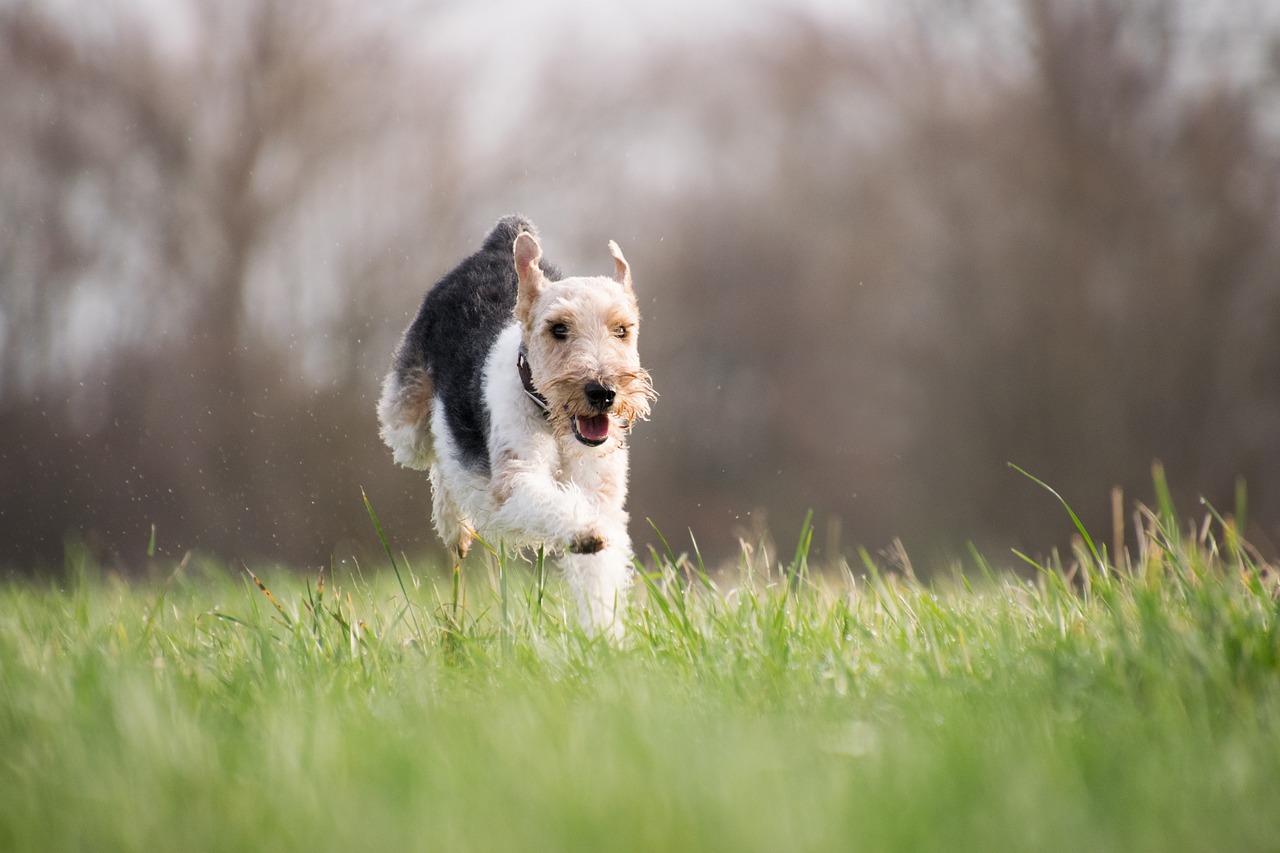
Myth 3: Dogs Only Want to Please Their Owners
When you think about dogs, the first image that often comes to mind is that of a loyal companion eagerly wagging its tail, ready to do anything to make you happy. But here's the kicker: while it's true that dogs have a strong desire to please, their motivations are much more complex than just wanting to make their owners smile. Dogs are not simply programmed to obey; they are influenced by a mix of instincts, training, and their own emotional needs.
Dogs, much like humans, have their own personalities and motivations. They come with a set of innate instincts that shape their behavior. For instance, a herding dog might feel an overwhelming urge to chase and herd, while a hunting breed may instinctively want to track and retrieve. These instincts can sometimes clash with their desire to please their owners. Imagine a dog that’s torn between its instinct to chase a squirrel and its owner’s command to sit. The internal struggle can lead to confusion and frustration for both the pet and the owner.
Moreover, the relationship between a dog and its owner is built on more than just a desire to please. It’s about trust and understanding. Dogs are incredibly perceptive creatures; they pick up on our emotions and body language. If an owner is anxious or frustrated, a dog might mirror that energy, leading to behaviors that seem less about pleasing and more about responding to the owner's emotional state. This is why establishing a calm and positive atmosphere is crucial for effective communication between you and your furry friend.
Effective training plays a significant role in shaping a dog's behavior. Training isn’t just about teaching commands; it’s about creating a bond where the dog learns to understand what is expected of it. When a dog is trained using positive reinforcement, it learns that good behavior leads to rewards, such as treats or praise. This method builds a solid foundation of trust and respect, making the dog more eager to please because it understands the benefits of doing so. In contrast, using punishment can lead to fear and anxiety, which can diminish the dog's desire to engage positively.
In conclusion, while dogs do have a natural inclination to please their owners, it’s essential to recognize the myriad factors influencing their behavior. Understanding your dog's instincts, emotional needs, and the importance of positive training can help you foster a more fulfilling relationship. Instead of simply expecting your dog to obey, consider the underlying motivations that guide its actions. After all, a happy dog is a well-understood dog!
- Why do dogs sometimes ignore commands? Dogs may ignore commands due to distractions, lack of training, or conflicting instincts. It's essential to train in a distraction-free environment and gradually introduce new commands.
- How can I strengthen my bond with my dog? Engage in regular playtime, training sessions, and positive interactions. Spend quality time together to build trust and understanding.
- What should I do if my dog exhibits unwanted behaviors? Identify the triggers for the behavior and consult a professional trainer if necessary. Positive reinforcement and consistent training can help modify unwanted behaviors.
Understanding Canine Instincts
When it comes to our furry friends, understanding their instincts is key to fostering a harmonious relationship. Dogs are not just loyal companions; they are also creatures driven by a rich tapestry of instincts that stem from their wild ancestors. These instincts can influence their behavior in profound ways, often leading to misunderstandings between them and their human companions. For instance, a dog’s instinct to herd, hunt, or guard can sometimes manifest in ways that may seem odd or even problematic to us.
Take, for example, the herding instinct. Breeds like Border Collies are renowned for their ability to herd sheep, but this instinct can also lead them to try to herd children, other pets, or even adults! This behavior is not meant to be aggressive or disruptive; it’s simply a reflection of their natural instincts. Understanding this can help owners redirect such behaviors in a positive way, perhaps by engaging the dog in structured activities that allow them to express their herding instincts in a controlled environment.
Similarly, the hunting instinct is prevalent in many breeds, particularly those classified as sporting or hound dogs. These dogs may exhibit behaviors such as chasing after small animals, which can pose challenges for owners in urban settings. Recognizing that these behaviors are rooted in instinct allows owners to take proactive measures, such as providing plenty of exercise and mental stimulation to satisfy their dog’s hunting drive. Engaging in activities like fetch or scent games can channel this instinct in a productive manner.
Moreover, the guarding instinct is another fundamental trait in many breeds. Dogs like German Shepherds and Rottweilers have been bred for protection, and while this can be a great asset, it can also lead to overly protective behavior if not managed properly. Understanding this instinct means that owners can work on socialization and training from an early age, teaching their dogs to differentiate between friend and foe, which is crucial for a well-adjusted pet.
In conclusion, understanding canine instincts is not just about recognizing behaviors; it’s about appreciating the rich history and evolutionary traits that make dogs who they are. By acknowledging these instincts, owners can better meet their pets' needs and foster a more fulfilling relationship. After all, a happy dog is one that is understood and engaged in ways that resonate with their natural tendencies.
- What are the most common canine instincts? Dogs commonly exhibit instincts related to herding, hunting, and guarding, which can influence their behavior significantly.
- How can I manage my dog's instinctual behaviors? Engaging your dog in activities that align with their instincts, such as fetch for hunting breeds or structured play for herding breeds, can help manage these behaviors.
- Are all dogs the same in terms of instincts? No, different breeds have unique instincts based on their historical roles, and understanding these differences is important for effective training and care.
- Can training override a dog's instincts? While training can help manage and modify instinctual behaviors, it is essential to recognize that instincts are deeply rooted and cannot be entirely eliminated.
The Importance of Training
Training your dog is not just about teaching them to sit or stay; it’s about building a strong bond between you and your furry friend. Think of training as a conversation where you both learn to understand each other better. When you communicate effectively, your dog feels more secure, which can significantly enhance their overall behavior and happiness.
One of the primary benefits of training is that it helps to establish clear boundaries and expectations. Just like us, dogs thrive on consistency. They need to know what is expected of them to feel comfortable and confident in their environment. For instance, if you consistently reward your dog for sitting when asked, they will quickly learn that this behavior leads to positive outcomes, such as treats or praise. This not only reinforces good behavior but also helps to prevent unwanted behaviors that can arise from confusion or anxiety.
Moreover, training provides mental stimulation, which is crucial for a dog’s well-being. Just as we enjoy solving puzzles or learning new things, dogs also need challenges to keep their minds sharp. Engaging in training sessions can help to prevent boredom, which is often a precursor to destructive behaviors. Activities like obedience training, agility courses, or even simple trick training can keep your dog’s brain active and engaged.
Additionally, training can be a fantastic way to socialize your dog. Through training classes or group sessions, your pet gets the opportunity to interact with other dogs and people in a controlled environment. This exposure is essential for developing a well-rounded dog who is comfortable in various situations. Socialization can help to prevent behavioral issues down the line, such as fear or aggression towards other animals or unfamiliar people.
When considering the importance of training, it’s also vital to recognize the role of positive reinforcement. This method focuses on rewarding desirable behaviors rather than punishing undesirable ones. Studies have shown that positive reinforcement is not only more effective but also strengthens the bond between you and your dog. It creates a trusting relationship where your dog feels safe to explore and learn.
In summary, training is an indispensable part of pet ownership. It enhances communication, provides mental stimulation, promotes socialization, and fosters a trusting relationship between you and your dog. So, whether you’re teaching your pup basic commands or advanced tricks, remember that every training session is an investment in your pet’s happiness and well-being.
- How long should training sessions last? Training sessions should ideally be kept short, around 5-10 minutes for puppies and up to 15-20 minutes for adult dogs, to maintain their attention and enthusiasm.
- Can I train my dog at home? Absolutely! Home training can be very effective. Just ensure you use positive reinforcement techniques and remain consistent.
- What if my dog doesn't respond to training? Every dog learns at their own pace. Patience and consistency are key. If you're struggling, consider seeking help from a professional trainer.
- Is it too late to train an older dog? It’s never too late! Older dogs can learn new tricks and commands, and training can provide them with mental stimulation and a stronger bond with their owner.
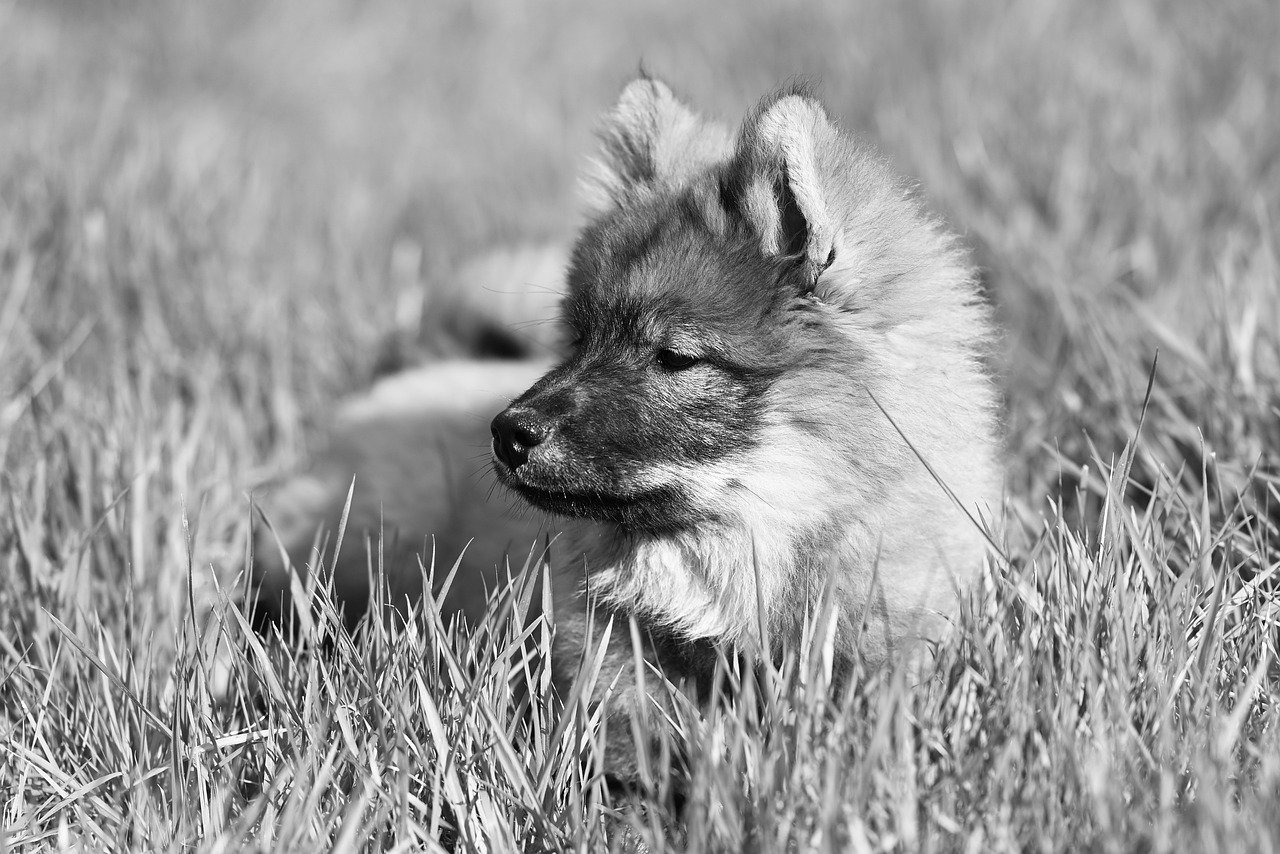
Myth 4: All Pets Are Naturally Aggressive
When it comes to our furry companions, the idea that all pets are naturally aggressive is a widespread misconception that can lead to misunderstanding and mistreatment. In reality, aggression in pets is often a reaction to specific circumstances rather than an inherent trait. Just like humans, pets have their own unique personalities and experiences that shape their behavior. So, let’s dive deeper into what really drives aggression in our beloved animals.
First off, it’s essential to recognize that aggression can stem from various factors, including fear, territorial instincts, and even pain. For instance, a dog may bark and growl at strangers not because it’s aggressive by nature, but due to fear of the unknown. Similarly, a cat might swat or hiss when feeling threatened or cornered. Understanding these triggers is crucial for pet owners who want to foster a peaceful environment.
Here are some common triggers of aggressive behavior in pets:
- Fear: Many pets react aggressively when they feel threatened. This could be due to loud noises, unfamiliar people, or sudden movements.
- Territorial Behavior: Pets can be protective of their home and family. This instinct can lead to aggressive behavior towards perceived intruders.
- Pain or Discomfort: If a pet is in pain, it may lash out when approached. This is especially common in older pets or those with health issues.
Addressing aggressive behavior requires a thoughtful approach. Rather than labeling a pet as aggressive, it’s vital to identify the underlying causes of their behavior. For example, if a dog becomes aggressive when someone enters the house, it may benefit from desensitization training. This involves gradually exposing the dog to new people in a controlled manner, rewarding calm behavior, and reinforcing positive interactions.
Moreover, behavior modification techniques can be incredibly effective in managing aggression. Here are a few strategies that pet owners can implement:
- Positive Reinforcement: Rewarding good behavior with treats or praise helps pets learn what is expected of them.
- Consistent Training: Regular training sessions can help pets understand commands and improve their overall behavior.
- Seeking Professional Help: Sometimes, it’s best to consult a veterinarian or a professional animal behaviorist, especially if aggression is severe or persistent.
Ultimately, understanding that aggression is not a default state for pets opens the door to better care and management. By observing your pet's behavior and recognizing the signs of discomfort or fear, you can help them feel safe and secure. This not only improves their quality of life but also strengthens the bond between pet and owner.
Q: Can all pets be trained to overcome aggression?
A: Yes, with the right techniques and consistent training, many pets can learn to manage their aggressive tendencies. It's essential to understand their triggers and work on desensitization.
Q: Is aggression more common in certain breeds?
A: While some breeds may have a predisposition to certain behaviors, aggression is more about individual personality and past experiences than breed alone.
Q: How can I tell if my pet is being aggressive or just playing?
A: Playful behavior usually involves relaxed body language and vocalizations. In contrast, aggression often includes growling, stiff body posture, and direct staring.
By debunking the myth that all pets are naturally aggressive, we can create a more understanding and compassionate world for our four-legged friends. Remember, aggression can often be managed with love, patience, and proper training!
Identifying Triggers
Understanding the triggers that lead to aggressive behavior in pets is essential for any responsible pet owner. Just like humans, pets have their own unique set of circumstances that can provoke a reaction. Often, aggression is not just a random outburst; it stems from specific situations or stimuli that make your furry friend feel threatened, anxious, or uncomfortable. By identifying these triggers, you can help mitigate aggressive responses and create a more harmonious environment for both your pet and yourself.
Common triggers can include:
- Fear: A loud noise, a sudden movement, or unfamiliar people can cause pets to feel scared, leading to defensive aggression.
- Territoriality: Pets may become aggressive when they feel their space is being invaded, whether by other animals or even new family members.
- Frustration: Sometimes, pets can act out when they are unable to reach a desired object or are restrained, resulting in aggressive behavior.
- Pain or Discomfort: Aggression can also be a response to physical pain or illness. A pet in pain may lash out if they feel threatened.
To effectively identify triggers, observe your pet's behavior closely. Keep a journal of incidents where aggression occurs, noting the circumstances surrounding each event. This can help you spot patterns and better understand what specifically sets off your pet's aggressive tendencies. For instance, if your dog growls when approached while eating, it may be a sign of food guarding. Recognizing this behavior is the first step toward addressing it and ensuring a safer environment.
Additionally, consider consulting with a professional animal behaviorist or trainer. They can provide valuable insights and strategies tailored to your pet's unique needs. Remember, the goal is not only to manage aggression but also to foster a trusting relationship between you and your pet. By understanding what triggers their aggressive behavior, you can implement effective training techniques and create a more peaceful household.
Q: What should I do if my pet shows signs of aggression?
A: It's crucial to remain calm and avoid escalating the situation. Try to remove your pet from the triggering environment and consult with a professional trainer or behaviorist for guidance.
Q: Can aggression in pets be treated?
A: Yes, aggression can often be managed or treated with the right training techniques, behavior modification, and sometimes medication, depending on the severity and underlying cause.
Q: How can I prevent my pet from becoming aggressive?
A: Early socialization, consistent training, and providing a safe, comfortable environment can help prevent aggressive behavior in pets. Regular exercise and mental stimulation are also key factors.
Q: Are certain breeds more prone to aggression?
A: While some breeds may have tendencies toward aggression due to their history or instincts, individual temperament and training play a significant role in a pet's behavior. Every pet is unique and should be treated as such.
Behavior Modification Techniques
When it comes to addressing aggressive behavior in pets, employing effective can make all the difference. It's essential to understand that aggression is often a response to fear, anxiety, or territorial instincts, rather than a reflection of a pet's character. This means that with the right approach, you can help your furry friend learn to cope with their triggers and respond more positively.
One of the most effective methods for modifying behavior is positive reinforcement. This technique involves rewarding your pet for displaying desired behaviors instead of punishing them for unwanted actions. For example, if your dog remains calm while a stranger approaches, offer them a treat or praise. This not only reinforces their good behavior but also helps them associate positive experiences with previously stressful situations. The key here is consistency; the more you reward the right actions, the more likely your pet will repeat them.
Another technique is desensitization. This involves gradually exposing your pet to the stimuli that trigger their aggressive behavior in a controlled environment. Start by introducing the trigger at a distance where your pet feels safe. As they become more comfortable, you can slowly decrease the distance, always rewarding calm behavior. This method requires patience, as it may take time for your pet to adjust, but it can lead to significant improvements in their reactions.
In addition to these techniques, counter-conditioning can be highly effective. This involves changing your pet's emotional response to a trigger. For instance, if your dog barks at other dogs, you can start by giving them treats whenever they see another dog, gradually helping them associate the presence of other pets with positive outcomes. Over time, this can help reduce their anxiety and aggression.
It’s also crucial to maintain a calm and assertive demeanor during training sessions. Pets are incredibly perceptive and can pick up on their owner's emotions. If you’re anxious or frustrated, your pet may become more agitated. Therefore, staying relaxed and confident can create a more positive training atmosphere.
Lastly, consider seeking the help of a professional animal behaviorist or trainer, especially if your pet's aggression is severe. They can provide tailored strategies and support to help you and your pet navigate these challenges effectively. Remember, modifying behavior is a journey, and with dedication and the right techniques, you can foster a safer and more harmonious environment for both you and your beloved pet.
- What is positive reinforcement? Positive reinforcement is a training method that rewards desired behaviors, encouraging pets to repeat those actions.
- How long does behavior modification take? The time it takes can vary greatly depending on the pet and the severity of the behavior, but consistency and patience are key.
- Can I train an aggressive pet on my own? While some may succeed, seeking professional help is often recommended for severe aggression cases.
- What should I do if my pet shows signs of aggression? It's important to assess the situation, avoid confrontation, and consult a professional if necessary.

Myth 5: Pets Don't Experience Emotions
One of the most pervasive myths surrounding our furry friends is the belief that they lack emotional depth. Many pet owners might think that their pets are simply responding to stimuli without any real feelings involved. However, this couldn't be further from the truth! Research has shown that pets, especially dogs and cats, are capable of experiencing a wide range of emotions, including joy, fear, and even jealousy. Just like humans, pets have their own unique ways of expressing these feelings, often through their behavior and interactions with us.
For instance, have you ever noticed your dog wagging its tail vigorously when you come home? This is not just a reflex; it's a clear sign of excitement and happiness! Similarly, when a cat rubs against your leg, it’s not merely seeking attention; it’s marking you with its scent, which is a way of saying, "You are mine!" These behaviors illustrate that pets are not just instinct-driven creatures but emotional beings that form deep connections with their owners.
Understanding your pet's emotional responses can significantly enhance your relationship with them. Here are some common emotions pets experience:
- Joy: Often displayed through playfulness, vocalizations, and affectionate behaviors.
- Fear: Can be seen when pets hide, exhibit unusual aggression, or avoid certain situations.
- Jealousy: Pets may act out or seek attention when they feel they are being replaced by another pet or person.
Moreover, studies have indicated that dogs have an emotional range similar to that of a toddler, showcasing their ability to feel empathy and understand human emotions. For example, dogs can sense when their owners are sad and often respond by offering comfort, whether through cuddles or gentle nudges. This emotional intelligence is what makes the bond between pets and owners so special.
To further illustrate this point, consider the following table that summarizes various emotional behaviors in pets:
| Emotion | Behavior | Possible Interpretation |
|---|---|---|
| Joy | Wagging tail, playful demeanor | Happy to see you or excited for playtime |
| Fear | Hiding, trembling, excessive barking | Feeling threatened or anxious |
| Jealousy | Acting out, seeking attention | Feeling neglected when another pet or person is present |
Recognizing these emotional cues is essential for pet owners. It allows you to respond appropriately to your pet's needs and feelings, fostering a stronger, more trusting relationship. So next time you notice your pet acting a certain way, take a moment to consider what they might be feeling. After all, they are not just animals; they are our companions, capable of love and emotion just like us!
Q: Can pets really feel love?
A: Yes! Pets can form strong emotional bonds with their owners and often show affection in various ways, such as following you around or cuddling with you.
Q: How can I tell if my pet is happy?
A: Look for signs like a wagging tail in dogs, playful behavior, and relaxed body language. Cats may purr, knead, or follow you around when they're content.
Q: Do pets experience anxiety?
A: Absolutely! Pets can experience anxiety due to various factors such as changes in their environment, loud noises, or separation from their owners.
Q: How can I support my pet's emotional well-being?
A: Providing a stable environment, regular exercise, social interaction, and mental stimulation can help keep your pet emotionally healthy.
Emotional Responses in Dogs
Dogs are fascinating creatures, often displaying a wide range of emotional responses that can be quite similar to those of humans. They express joy, fear, excitement, and even jealousy through their behavior and body language. For instance, when a dog is excited, you might notice them wagging their tail vigorously, jumping around, or even barking with glee. This exuberance is a clear sign of happiness, often triggered by playtime, seeing their favorite person, or anticipating a treat.
On the flip side, dogs also experience fear and anxiety. Imagine a thunderstorm rolling in or fireworks exploding nearby; many dogs will exhibit signs of distress such as hiding, trembling, or excessive barking. Understanding these emotional responses is crucial for pet owners. It’s essential to recognize when your furry friend is feeling scared or anxious, as this can help you provide the comfort and reassurance they need.
Interestingly, dogs can also exhibit jealousy. Have you ever noticed your dog acting out when you give attention to another pet or person? This behavior can manifest in various ways, such as pushing their way between you and the other individual or even barking. Dogs are social animals that thrive on attention and affection, and they often want to be the center of your world. This can lead to some amusing, albeit slightly troublesome, situations!
To better understand your dog’s emotional state, it’s important to pay attention to their body language. Here are some key indicators of different emotions:
- Happiness: Wagging tail, relaxed body, playful behavior.
- Fear: Cowering, tail tucked between legs, avoiding eye contact.
- Excitement: Jumping, barking, quick movements.
- Jealousy: Pushing, whining, stealing attention.
By observing these behaviors, you can gain valuable insights into your dog's emotional landscape. This understanding allows you to respond appropriately, whether it’s offering a comforting hug during a storm or engaging in playtime to celebrate their happiness. Ultimately, fostering a strong emotional bond with your dog enhances their well-being and strengthens the relationship you share.
Q: Can dogs really feel emotions like humans do?
A: Yes, dogs have complex emotional lives and can experience a range of feelings, including joy, fear, and jealousy. Their emotional responses are often expressed through body language and behavior.
Q: How can I tell if my dog is happy?
A: A happy dog typically exhibits a relaxed body posture, wagging tail, playful behavior, and may even vocalize joyfully. They often seek out interaction and affection from their owners.
Q: What should I do if my dog shows signs of fear or anxiety?
A: It's important to create a safe space for your dog during stressful situations. Comfort them with your presence, use calming techniques, and consider consulting a veterinarian or a professional trainer for additional strategies.
Q: Can I help my dog manage jealousy?
A: Yes, you can help your dog by ensuring they receive plenty of attention and positive reinforcement. Gradually introducing them to new pets or people can also help reduce feelings of jealousy.
Understanding Your Pet's Emotions
Understanding your pet's emotions is like learning a new language, one that requires patience, observation, and a bit of intuition. Just like humans, pets experience a wide range of emotions, from joy and excitement to fear and anxiety. However, they express these feelings differently. For instance, a wagging tail in a dog often signifies happiness, while a cat may show contentment by purring or kneading. Recognizing these signs can deepen the bond between you and your furry friend, allowing you to respond appropriately to their needs.
To better grasp your pet's emotional state, it's essential to pay attention to their body language and vocalizations. For example, a dog that cowers or tucks its tail might be feeling scared or threatened, while a cat that arches its back and hisses is likely feeling defensive. By understanding these signals, you can create a more comfortable and secure environment for your pet. Moreover, being attuned to their emotions helps in addressing any issues that may arise. If your dog seems anxious during thunderstorms, for instance, you can take steps to soothe them, such as providing a safe space or using calming products.
Additionally, pets can experience complex emotions such as jealousy. Have you ever noticed your dog acting out when you give attention to another pet? This behavior can stem from a desire for your affection. Understanding that pets can feel such emotions can help you manage their behavior more effectively. You might consider giving equal attention to all your pets, ensuring that no one feels left out.
Here’s a quick reference table that outlines some common emotional signs in pets:
| Emotion | Dog Signs | Cat Signs |
|---|---|---|
| Happiness | Wagging tail, playful barking | Purring, kneading, relaxed posture |
| Fear | Cowering, tucked tail, whining | Hiding, flattened ears, hissing |
| Anger/Defensiveness | Growling, showing teeth | Arched back, swatting, hissing |
| Jealousy | Barking at other pets, acting out | Ignoring you, seeking attention |
By observing these behaviors, you can learn to interpret your pet's emotional state better. It’s not just about knowing when they are happy or sad; it’s about understanding the nuances of their feelings. For instance, when a dog is excited, it might jump around, but if the same dog is anxious, it may pace or whine. This awareness allows you to respond in a way that reassures and comforts them, fostering a stronger connection.
In conclusion, understanding your pet's emotions is a rewarding journey that enhances your relationship. By being attentive to their body language and vocalizations, you can better support their emotional well-being. Remember, every pet is unique, and their emotional expressions may vary. So take the time to learn about your pet's individual quirks and preferences. This not only enriches their life but also brings joy and fulfillment to yours.
- How can I tell if my pet is happy? Look for signs like a wagging tail in dogs or purring in cats. Playfulness and relaxed body language are also good indicators.
- What should I do if my pet seems anxious? Create a safe space for them, use calming techniques, and consult a veterinarian if anxiety persists.
- Can pets feel jealousy? Yes, pets can experience jealousy, especially when they feel their owner's attention is divided.
- How do I communicate better with my pet? Spend time observing their behaviors, learn their body language, and respond consistently to their needs.
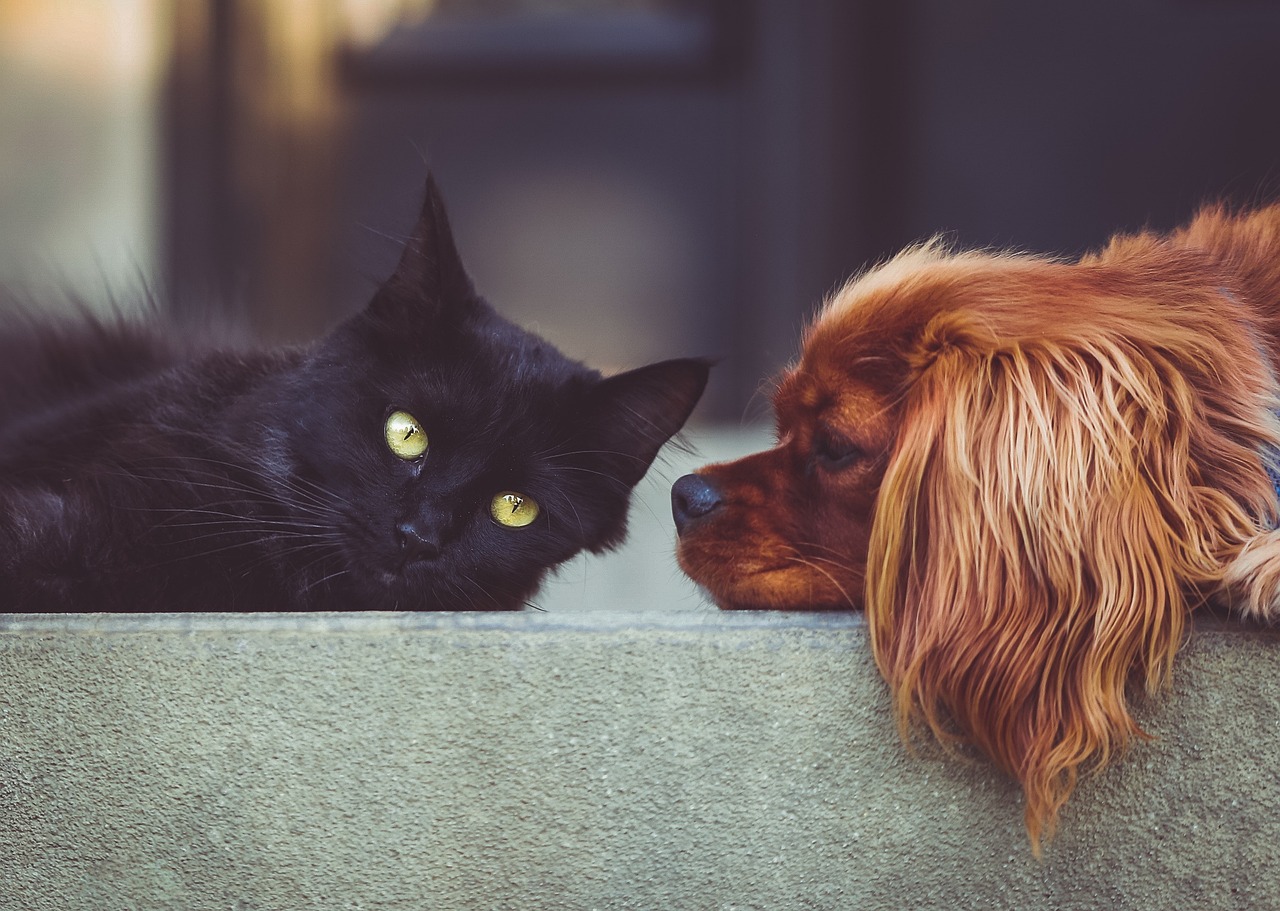
Myth 6: Older Pets Can't Learn New Tricks
One of the most persistent myths surrounding pet ownership is the belief that older pets are incapable of learning new tricks. This misconception can lead to a lack of mental stimulation for senior animals, which is crucial for their well-being. In reality, age should not be a barrier to learning. Just like humans, pets can continue to learn and adapt throughout their lives, provided they receive the right support and encouragement.
Training older pets can be an incredibly rewarding experience, both for the pet and the owner. It’s important to remember that older pets may not learn in the same way as younger ones; their attention spans might be shorter, and they may require more patience. However, this doesn’t mean they can’t master new skills or behaviors. In fact, engaging in training can enhance their quality of life, keeping their minds sharp and their spirits high.
Here are some effective techniques for teaching older pets:
- Positive Reinforcement: Rewarding good behavior with treats, praise, or playtime encourages pets to repeat those actions. This method is particularly effective for older pets who may respond better to gentle encouragement rather than strict commands.
- Short Training Sessions: Keeping training sessions brief—around 5 to 10 minutes—can help maintain your pet's interest and prevent frustration. Frequent, short sessions are often more effective than longer, infrequent ones.
- Consistency is Key: Use the same commands and gestures consistently. This helps your pet understand what is expected of them and reinforces learning.
Additionally, training older pets can have numerous benefits beyond learning new tricks. It provides mental stimulation, which is essential for preventing cognitive decline as pets age. Moreover, the bond between you and your pet can deepen through shared experiences, creating a stronger relationship built on trust and communication.
In conclusion, the notion that older pets can't learn new tricks is a myth that needs to be debunked. With patience, understanding, and the right approach, you can teach your older pet new skills and enrich their life. Remember, it’s never too late for your furry friend to learn something new!
Q: Can all older pets learn new tricks?
A: Yes, most older pets can learn new tricks, although the process may take longer compared to younger pets. Each pet is unique, so it's essential to tailor your approach to their individual needs.
Q: How can I keep my older pet motivated during training?
A: Use high-value treats, praise, and playtime as rewards. Make training sessions fun and engaging to keep your older pet interested.
Q: Are there any specific tricks that are easier for older pets to learn?
A: Simple tricks like "sit," "stay," or even "shake hands" can be easier for older pets to grasp. Start with something simple and gradually increase the difficulty as they become more comfortable.
Benefits of Training Older Pets
Training older pets is not just a way to teach them new tricks; it offers a plethora of benefits that can significantly enhance their quality of life. First and foremost, engaging in training sessions provides mental stimulation, which is crucial for maintaining cognitive function as pets age. Just like humans, pets can experience cognitive decline, and keeping their minds active can help stave off issues like confusion or disorientation.
Moreover, training serves as a wonderful bonding experience between the pet and the owner. As you work together to learn new commands or tricks, you’re building trust and strengthening your relationship. This connection is especially important for older pets who may have experienced changes in their environment or family dynamics. They often seek reassurance, and training can provide that sense of stability and security.
Another significant benefit of training older pets is the improvement in their overall behavior. Many older pets have developed habits that may not be ideal, such as excessive barking or jumping. With consistent training, these behaviors can be modified. It’s important to approach this with patience and positive reinforcement, as older pets may take a bit longer to learn new behaviors compared to younger ones. For instance, rewarding them with treats or praise when they follow commands helps reinforce the desired behavior.
Additionally, training can help with physical health. Many training exercises encourage movement and activity, which are essential for maintaining a healthy weight and preventing obesity-related issues. Simple commands like “sit” or “stay” can be incorporated into playtime, encouraging your pet to engage physically while also exercising their mind.
Lastly, training older pets can significantly boost their confidence. Many older pets may feel insecure, especially if they’ve been through changes or challenges in their lives. Successfully learning new commands can give them a sense of achievement, making them feel more secure in their environment. This newfound confidence can translate into a happier and more well-adjusted pet.
In summary, the benefits of training older pets are manifold, including:
- Enhanced mental stimulation to combat cognitive decline
- Strengthened bond between pet and owner
- Improved behavior and modification of undesirable habits
- Promotion of physical health through active participation
- Boosted confidence leading to a happier pet
Thus, investing time in training your older pet is not just beneficial; it's a rewarding journey that can lead to a more fulfilling life for both you and your furry friend.
Q: Can older pets really learn new tricks?
A: Absolutely! With patience and positive reinforcement, older pets can learn new tricks just like younger ones. It may take a bit longer, but the process can be extremely rewarding.
Q: How long should training sessions be for older pets?
A: Shorter sessions of about 5-10 minutes are usually best for older pets. This helps keep their attention focused and prevents them from becoming overwhelmed or fatigued.
Q: What types of training are best for older pets?
A: Basic obedience training, tricks that involve gentle movement, and even scent work can be great options. Always tailor the training to your pet’s physical abilities and preferences.
Q: Should I consult a professional trainer for my older pet?
A: If you're unsure about how to start training or if your pet has specific behavioral issues, consulting a professional trainer can provide valuable guidance and techniques tailored to older pets.
Techniques for Teaching Older Pets
Teaching older pets new tricks may seem like a daunting task, but it can be a rewarding experience for both you and your furry friend. Just like humans, pets can learn at any age, and the key lies in using the right techniques. First and foremost, patience is essential. Older pets may take a little longer to grasp new concepts, so it's important to approach training with a calm demeanor and a positive attitude.
One effective technique is to incorporate positive reinforcement. This means rewarding your pet with treats, praise, or playtime whenever they successfully perform a desired behavior. For example, if you're teaching your older dog to sit, offer a small treat immediately after they do so. This not only encourages them to repeat the behavior but also strengthens your bond. Remember, consistency is key! Make sure everyone in the household is on the same page regarding commands and rewards.
Short training sessions are also highly beneficial for older pets. Their attention spans might not be as long as younger animals, so keeping sessions to about 5-10 minutes can prevent frustration for both of you. You can have multiple short sessions throughout the day, focusing on one or two commands at a time. This method allows your pet to absorb the information without feeling overwhelmed. Additionally, incorporating play into training can make it more enjoyable. For instance, you can turn a simple command like "fetch" into a fun game, which keeps them engaged and motivated.
Another important aspect to consider is the physical health of your older pet. Before starting any training, ensure that they are comfortable and free from pain. If your pet has mobility issues, adjust your training techniques accordingly. For example, instead of having them jump, you can teach them to perform actions while sitting or lying down. Always consult your veterinarian if you're unsure about your pet's physical capabilities.
Lastly, don't forget the importance of socialization. Engaging with other pets and people can enhance your older pet's confidence and willingness to learn. Arrange playdates or visit dog parks where they can interact with others. This not only provides mental stimulation but also helps them feel more comfortable in various environments.
In summary, teaching older pets requires a combination of patience, positive reinforcement, short sessions, and awareness of their physical capabilities. By creating a supportive and engaging learning environment, you can help your older pet thrive and learn new skills, proving that age is just a number when it comes to learning!
- Can all older pets learn new tricks?
Yes, most older pets can learn new tricks with the right approach and techniques. - How long should training sessions be for older pets?
Training sessions for older pets should ideally last between 5-10 minutes. - What if my older pet has mobility issues?
Adjust your training techniques to accommodate their physical limitations, focusing on commands that can be performed while sitting or lying down. - Is positive reinforcement effective for older pets?
Absolutely! Positive reinforcement is one of the most effective training methods for pets of all ages.

Myth 7: Pets Will Always Know Their Owners
It's a common belief among pet owners that their furry friends will always recognize them, no matter the circumstances. However, this notion is not entirely accurate. While pets, especially dogs and cats, have an incredible ability to form strong bonds with their owners, various factors can influence their recognition and behavior. For instance, stressful situations, environmental changes, or even health issues can affect a pet's ability to identify their owner. Imagine walking into a room filled with unfamiliar faces and noises; it can be overwhelming, right? Well, pets can feel the same way!
When pets experience significant changes in their environment, such as moving to a new home, the introduction of new family members, or even a shift in their daily routine, their behavior can change dramatically. These changes can lead to confusion and anxiety, making it difficult for them to recognize their owners immediately. For example, a dog that has always eagerly greeted you at the door might hesitate or seem disoriented in a new space. This doesn't mean they don't love you; it simply indicates they are adjusting to their surroundings.
Moreover, factors such as age and health can also play a role in how well pets recognize their owners. Older pets may experience cognitive decline, leading to confusion and difficulty in recognizing familiar faces. Similarly, pets that are unwell may not respond as they usually would, which can be distressing for both the pet and the owner. Just like humans, pets can experience lapses in memory, especially during times of stress or discomfort.
So, what can you do to help your pet adjust and maintain that strong bond? Here are a few techniques:
- Maintain Consistency: Try to keep your pet's routine as consistent as possible. Regular feeding times, walks, and playtime can provide a sense of stability.
- Create a Safe Space: Ensure your pet has a comfortable area where they can retreat when feeling overwhelmed. This can help them feel secure in their environment.
- Positive Reinforcement: Use treats and praise to reinforce recognition behaviors. When your pet responds to you positively, reward them to strengthen that connection.
In conclusion, while pets may not always recognize their owners under every circumstance, this doesn't diminish the bond you share. Understanding the factors that can affect recognition allows you to be more empathetic and supportive during times of change. Remember, patience and love are key to helping your pet feel secure and recognized, no matter what challenges arise.
Q: Can pets forget their owners?
A: While it's rare, pets can experience confusion or forgetfulness due to stress, age, or health issues. Consistent routines and positive reinforcement can help reinforce recognition.
Q: How can I help my pet adjust to changes in our environment?
A: Maintain a consistent routine, provide a safe space, and use positive reinforcement to help your pet feel secure and recognized.
Q: Do all pets experience recognition issues?
A: Not all pets will have recognition issues, but factors like age, stress, and health can impact their ability to recognize familiar faces.
Impact of Environmental Changes
When we think about our pets and their behavior, we often overlook the profound impact that environmental changes can have on them. Just like us, our furry companions thrive in stable, familiar settings. However, when their environment shifts—whether it's moving to a new house, the arrival of a new family member, or even changing their daily routine—pets can experience confusion and anxiety. This can lead to unexpected behaviors that may leave owners puzzled.
For instance, imagine your dog, who has always been calm and friendly, suddenly becomes anxious and barks excessively after you move to a new neighborhood. This reaction is not merely a phase; it’s a response to the unfamiliar sights, sounds, and smells that surround them. Similarly, cats are creatures of habit, and any disruption in their environment can lead to stress. They may hide more often or exhibit signs of aggression as they try to cope with the changes.
Understanding the psychological effects of these environmental changes is crucial for pet owners. Here are some common triggers that can cause stress in pets:
- Relocation to a new home
- New family members or pets
- Changes in daily routine
- Construction or loud noises in the vicinity
- Loss of a companion
Each of these factors can lead to a variety of behavioral changes. For example, a dog may start to exhibit signs of separation anxiety if they are not used to being alone in a new space. On the other hand, a cat might stop using their litter box if they feel insecure about their surroundings. Recognizing these signs early on can help you address the underlying issues and provide the necessary support for your pet.
To help your pet adjust to environmental changes, consider implementing the following strategies:
- Maintain Routine: Keep feeding, walking, and playtimes consistent to provide a sense of stability.
- Create a Safe Space: Designate an area where your pet can retreat if they feel overwhelmed.
- Gradual Introductions: Slowly introduce your pet to new family members or pets to minimize stress.
- Positive Reinforcement: Reward your pet for calm behavior during transitions to encourage a positive response.
By being mindful of how environmental changes can affect your pet's behavior, you can take proactive steps to ensure their comfort and happiness. Remember, just as we seek stability in our lives, our pets do too. Taking the time to understand their needs during these transitions will foster a stronger bond and a more harmonious living environment for everyone involved.
Q: How can I tell if my pet is stressed due to environmental changes?
A: Look for signs such as excessive barking, hiding, changes in appetite, or unusual aggression. If your pet is showing any of these signs, it may be a response to their new environment.
Q: What should I do if my pet refuses to eat after a move?
A: It's common for pets to lose their appetite when they are stressed. Try to maintain their feeding schedule and offer their favorite foods. If the issue persists, consult a veterinarian.
Q: How long does it usually take for pets to adjust to a new environment?
A: Adjustment periods can vary widely among pets. Some may adapt within a few days, while others might take weeks or even months. Patience and consistency are key.
Q: Can I use calming products to help my pet adjust?
A: Yes, there are various calming products available, such as pheromone diffusers, anxiety wraps, and calming treats that may help your pet feel more secure in their new environment.
Rebuilding Trust and Recognition
When a pet experiences changes in their environment, such as moving to a new home or the introduction of new family members, it can lead to confusion and anxiety. This is where the importance of comes into play. Just like humans, pets thrive on familiarity and routine, and any disruption can shake their sense of security. To help your furry friend regain their confidence and feel recognized, it’s essential to implement a few thoughtful strategies.
One effective method is to establish a consistent routine. Pets are creatures of habit, and maintaining regular feeding times, walks, and play sessions can help them feel more secure. In addition to routine, positive reinforcement plays a crucial role in rebuilding trust. Whenever your pet exhibits behavior that shows recognition of you or your commands, reward them with treats, praise, or affection. This not only reinforces their positive behavior but also reassures them that they are loved and safe.
Moreover, creating a calm and inviting environment can significantly aid in this process. Consider setting up a quiet space where your pet can retreat when they feel overwhelmed. This space should include their favorite toys, a cozy bed, and perhaps a piece of your clothing to provide comfort. Remember, patience is key; rebuilding trust takes time, and every small step forward is a victory.
Additionally, engaging in interactive activities can strengthen your bond. Activities such as gentle playtime, training sessions, or even simple cuddling can help your pet associate you with positive experiences. Over time, as they feel more comfortable, you will notice signs of recognition returning, such as wagging tails, purring, or even excited greetings when you come home.
In conclusion, rebuilding trust and recognition in pets after a significant change is a gradual process that requires consistency, positive reinforcement, and patience. By creating a stable environment and engaging in enjoyable activities, you can help your pet feel secure and loved once again.
- How long does it take for a pet to recognize their owner after a move?
Recognition can vary depending on the pet's personality and the extent of the changes. Typically, it may take a few days to a few weeks for them to adjust. - What should I do if my pet seems scared after a change?
Provide them with a safe space, maintain a routine, and offer plenty of reassurance through gentle interactions and positive reinforcement. - Can I help my pet adjust to new family members?
Yes! Gradually introduce new family members to your pet, allowing them to interact at their own pace while providing treats and praise for positive behavior. - Are there specific toys that can help rebuild trust?
Interactive toys that require your pet to engage with you, such as tug toys or puzzle feeders, can foster a sense of teamwork and strengthen your bond.

Myth 8: All Pets Are the Same
When it comes to our furry companions, many people fall into the trap of thinking that all pets are created equal. This couldn't be further from the truth! Each pet, whether it’s a dog, cat, rabbit, or even a bird, has its own unique personality, quirks, and needs. Just like humans, pets come with their individual traits that shape how they interact with the world around them. For instance, a Golden Retriever might be friendly and eager to please, while a Chihuahua may be more reserved and protective. Understanding these differences is crucial for providing the best care for your pet.
Let’s break it down a bit further. Different breeds of pets exhibit specific behaviors that are often tied to their history and purpose. For example:
- Herding Breeds: Dogs like Border Collies and Australian Shepherds are naturally inclined to herd animals, which can lead to behaviors like chasing and nipping.
- Terriers: Breeds such as Jack Russell Terriers are known for their high energy and strong prey drive, making them enthusiastic but sometimes challenging pets.
- Lap Pets: Breeds like the Persian cat or the Cavalier King Charles Spaniel thrive on affection and companionship, often seeking out human interaction.
Moreover, even within the same breed, individual personalities can vary widely. Some cats may be social butterflies, while others prefer solitude. This individuality is shaped by factors such as genetics, early socialization, and even the environment they grow up in. Recognizing that your pet is not just a generic animal but a unique individual can transform your relationship with them.
To illustrate the point further, let’s take a look at a few common personality traits associated with different types of pets:
| Type of Pet | Common Traits |
|---|---|
| Dogs | Affectionate, loyal, protective, social |
| Cats | Independent, curious, sometimes aloof, playful |
| Rabbits | Social, gentle, can be territorial, playful |
| Birds | Vocal, social, intelligent, can be territorial |
So, what does this mean for pet owners? It means that understanding your pet's unique traits is essential for providing the right care and training. You wouldn’t train a cat the same way you would train a dog, right? Each pet requires a tailored approach based on their breed, personality, and individual needs. This personalized care not only enhances their well-being but also strengthens the bond you share. Remember, your pet is not just another animal; they are a unique companion that deserves to be understood and cherished for who they are.
Q: How can I determine my pet's personality?
A: Spend time observing your pet's behavior in different situations. Take note of how they interact with people, other animals, and their environment. This will give you insights into their personality traits.
Q: Are certain breeds better for families with children?
A: Yes, some breeds are known for their gentle and patient nature, making them great family pets. Researching breed characteristics can help you choose the right pet for your family.
Q: Can pets change their personalities over time?
A: Absolutely! Pets can change as they age, especially with new experiences or changes in their environment. Regular interaction and socialization can help maintain a positive personality.
Understanding Breed-Specific Traits
When it comes to pets, understanding breed-specific traits is crucial for providing the best care and training for your furry friends. Just like humans, pets come with their unique personalities and behaviors, shaped significantly by their breed. For instance, a Border Collie is renowned for its intelligence and herding instinct, while a Bulldog is often characterized by its laid-back demeanor and stubbornness. Recognizing these traits can help you tailor your training methods and daily activities to suit your pet's needs.
Each breed has its own set of characteristics that influence not only behavior but also health and exercise requirements. For example, high-energy breeds like Australian Shepherds require ample physical activity and mental stimulation to thrive, while more sedentary breeds, such as Shih Tzus, may be perfectly content with short walks and indoor play. Understanding these differences can significantly impact your pet's happiness and well-being.
Moreover, some breeds have specific social needs. For instance, large breeds like Great Danes often enjoy the company of humans and other pets, while Chihuahuas may exhibit more territorial behaviors. It’s essential to consider these dynamics when introducing your pet to new environments or other animals. By understanding their breed-specific traits, you can create a harmonious living situation that respects each pet's unique personality.
In addition to behavioral traits, certain breeds are predisposed to particular health issues. For example, Boxers are known for their playful nature but are also prone to certain heart conditions, while Golden Retrievers are often affected by hip dysplasia. Being aware of these potential health concerns allows pet owners to take proactive measures, such as regular vet check-ups and tailored exercise plans, to ensure their pets lead healthy, happy lives.
In conclusion, understanding breed-specific traits is not just about knowing how your pet behaves; it’s about recognizing their needs and tailoring your care accordingly. This understanding fosters a deeper bond between you and your pet, ensuring that both of you can enjoy a fulfilling life together. The more you know about your pet's breed, the better equipped you'll be to provide the love, care, and attention they deserve.
- What are breed-specific traits? Breed-specific traits are characteristics and behaviors that are common among animals of the same breed, influenced by genetics and history.
- How can I learn about my pet's breed traits? Researching breed information through reputable sources, consulting with veterinarians, or speaking with breeders can provide valuable insights into your pet's traits.
- Do all pets of the same breed behave the same way? While breed traits provide a general guideline, individual personality and upbringing also play significant roles in behavior.
- How can I accommodate my pet's breed-specific needs? Tailor training, exercise, and socialization activities to match your pet's breed traits to ensure their well-being and happiness.
Recognizing Individual Personalities
Every pet is unique, and just like humans, they have their own personalities that shape how they interact with the world around them. Understanding these distinct traits is essential for fostering a strong bond with your furry friend. For instance, some dogs may be naturally more playful and energetic, while others might be more reserved or cautious. Similarly, cats can range from being affectionate lap companions to independent explorers who prefer their own space.
To truly recognize and appreciate your pet's personality, it's important to observe their behavior in various situations. Are they the type of dog that greets every visitor with excitement, or do they prefer to hang back and assess the situation? Do they enjoy interactive play, or are they more inclined to entertain themselves? These behaviors provide valuable insight into their individual personalities. For example, a dog that loves to fetch and play tug-of-war might thrive on high-energy activities, while a cat that enjoys watching birds from a window ledge may prefer quieter, more solitary pursuits.
Moreover, understanding a pet's personality can significantly influence their training and socialization. For instance, a confident dog may respond well to group training sessions, while a shy dog might benefit from one-on-one training in a calm environment. Similarly, recognizing that your cat is more social can encourage you to provide opportunities for interaction, such as playdates with other cats or engaging in interactive toys that stimulate their curiosity.
Here are some key personality traits to look for in your pets:
- Curious: Pets that are naturally inquisitive may enjoy exploring new environments and engaging in activities that challenge their minds.
- Affectionate: These pets thrive on human interaction and often seek out cuddles and attention.
- Independent: Some pets prefer to do their own thing and may not require as much interaction, which is perfectly normal.
- Playful: Pets with a playful personality often enjoy games and activities, making them great companions for active families.
- Laid-back: These pets tend to be calm and relaxed, often content to lounge around the house.
Recognizing these traits will not only enhance your relationship with your pet but also allow you to tailor their training and care to suit their specific needs. For example, a playful dog might benefit from agility training, while an independent cat may prefer toys that they can engage with on their own. By paying attention to your pet's unique personality, you can create an enriching environment that promotes their happiness and well-being.
Q1: How can I determine my pet's personality?
A1: Observe your pet's behavior in different situations, such as during playtime, when meeting new people, or when exploring new environments. Take note of their reactions and preferences.
Q2: Can a pet's personality change over time?
A2: Yes, pets can develop new traits as they age or as their environment changes. Factors such as socialization, training, and life experiences can all influence a pet's personality.
Q3: How do I cater to my pet's personality?
A3: Tailor your interactions and activities to suit your pet's personality. For example, engage a playful pet in active games, while providing a more independent pet with toys they can explore on their own.
Q4: What if my pet's personality seems negative?
A4: Some behaviors may stem from fear or anxiety. Consult with a veterinarian or a pet behaviorist to address any underlying issues and develop a positive training plan.
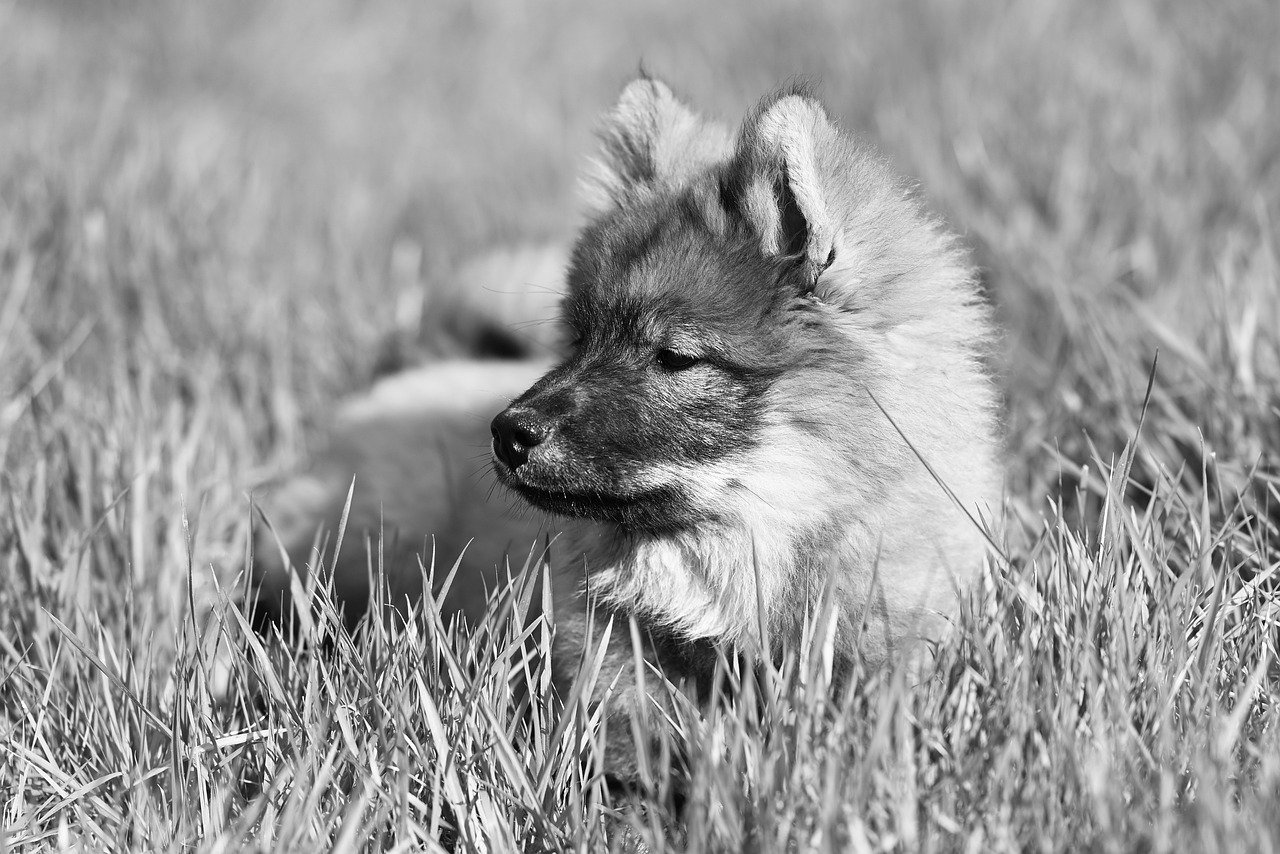
Myth 9: Pets Don't Need Mental Stimulation
Many pet owners might think that providing food, shelter, and a bit of exercise is all their furry friends need to thrive. However, this couldn't be further from the truth! Just like humans, pets require mental stimulation to keep their minds sharp and their spirits high. Imagine being stuck in a room with nothing to do for hours on end—sounds boring, right? Well, that’s how your pets feel without engaging activities to challenge their brains.
Mental stimulation is crucial for a pet's overall well-being. It helps to prevent boredom, which can lead to destructive behaviors, anxiety, and even depression. Pets are naturally curious creatures, and without opportunities to explore and learn, they may become restless. Think of their brains as sponges, always ready to soak up new information and experiences! Activities that stimulate their minds can include puzzle toys, interactive games, and training sessions.
Here are some effective ways to provide mental stimulation for your pets:
- Puzzle Toys: These toys require pets to solve a problem to get a treat, keeping them engaged and entertained.
- Interactive Play: Games like hide-and-seek or fetch with a twist can challenge your pet's mind and body.
- Training Sessions: Teaching your pet new tricks or commands not only reinforces good behavior but also stimulates their intellect.
- Socialization: Introducing your pet to new environments, people, and other animals can provide rich mental experiences.
Creating a stimulating environment is essential. Here are some tips to keep your pets engaged:
- Rotate their toys regularly to keep things fresh and exciting.
- Designate a play area with various textures and obstacles to explore.
- Incorporate scent work by hiding treats around the house for them to sniff out.
Incorporating these activities into your pet's daily routine can lead to a happier, healthier companion. Remember, a stimulated pet is a happy pet! By recognizing the importance of mental stimulation, you can foster a deeper bond with your furry friend and enhance their quality of life.
Q: How much mental stimulation does my pet need?
A: The amount varies by species and individual personality, but daily engagement through play or training is beneficial. Aim for at least 15-30 minutes of focused activity each day.
Q: Can I use my pet’s regular playtime for mental stimulation?
A: Absolutely! Incorporating puzzle toys or training into playtime can enhance the mental challenge while keeping it fun.
Q: What if my pet seems uninterested in mental activities?
A: If your pet isn't engaging, try different activities to find what excites them. Some pets prefer physical challenges, while others thrive on scent work or problem-solving.
Q: Are there specific toys recommended for mental stimulation?
A: Yes! Look for toys that involve problem-solving, like treat-dispensing puzzles or interactive games that require your pet to think critically.
Importance of Enrichment Activities
Just like us, pets need more than just food and shelter to thrive; they require mental stimulation to keep their minds sharp and their spirits high. Imagine being stuck in a room with nothing to do for hours on end—it would drive anyone a little crazy! This is precisely how our furry friends feel when they lack enrichment activities. Engaging in stimulating activities not only prevents boredom but also helps reduce behavioral issues that arise from pent-up energy.
Enrichment activities can take many forms, and the best part is that they can be tailored to fit your pet's unique personality and preferences. For instance, dogs may enjoy interactive games like fetch or hide-and-seek, while cats might find joy in puzzle feeders or climbing structures. Here are some examples of enriching activities:
- Interactive Toys: Toys that dispense treats or require problem-solving can keep pets engaged for hours.
- Training Sessions: Regular training not only teaches new commands but also stimulates your pet's mind.
- Outdoor Adventures: Taking your pet on new trails or to different parks can provide fresh smells and sights, enriching their experience.
But why is this so important? Well, enrichment activities can lead to a variety of benefits for both pets and their owners. They can improve your pet's emotional health by reducing anxiety and stress, which is particularly crucial for pets that may have experienced trauma in the past. Furthermore, a well-stimulated pet is often more well-behaved, making life easier for you as an owner. Think of it as a win-win situation!
Moreover, mental stimulation can greatly enhance your pet's physical health. Engaging in activities keeps them active and helps maintain a healthy weight, reducing the risk of obesity-related diseases. It’s like a workout for their brain and body all in one! To illustrate this point, consider the following table that outlines the benefits of mental enrichment:
| Benefit | Description |
|---|---|
| Reduced Boredom | Engaging activities keep pets entertained and satisfied. |
| Improved Behavior | Less boredom leads to fewer behavioral issues like chewing or barking. |
| Enhanced Bonding | Participating in activities together strengthens the bond between pet and owner. |
| Physical Health | Mental stimulation often involves physical activity, leading to better overall health. |
In conclusion, incorporating enrichment activities into your pet’s daily routine is not just a luxury—it’s a necessity for their overall well-being. By understanding their needs and providing them with stimulating experiences, you’re not only enhancing their quality of life but also making your home a happier place. So, grab that puzzle toy or head out for an adventure; your pet will thank you for it!
Q: How often should I engage my pet in enrichment activities?
A: It's best to incorporate some form of enrichment into your pet's daily routine. Even short sessions can be beneficial!
Q: Can I use household items for enrichment activities?
A: Absolutely! Items like cardboard boxes, old towels, and even empty plastic bottles can be transformed into fun and engaging activities for your pets.
Q: What if my pet isn't interested in toys?
A: Not all pets are toy-driven. Try different activities such as scent games, training sessions, or outdoor exploration to find what excites your pet.
Creating a Stimulating Environment
Creating a stimulating environment for your pet is essential for their mental health and overall well-being. Just like humans, pets thrive when they have opportunities to explore, play, and engage with their surroundings. An enriched environment can prevent boredom, reduce behavioral issues, and promote a happy and healthy lifestyle. So, how can you transform your home into a pet paradise?
First and foremost, consider incorporating a variety of interactive toys into your pet's playtime routine. Toys that challenge their minds, such as puzzle feeders or treat-dispensing toys, can keep them engaged for hours. These toys not only provide entertainment but also stimulate their natural instincts and problem-solving skills. For example, a simple puzzle toy can turn mealtime into an enjoyable challenge, making your pet work for their food while keeping their brain active.
Additionally, creating designated play areas can significantly enhance your pet's environment. These spaces should be safe and equipped with different types of toys, climbing structures, or scratching posts, depending on whether you have a dog or a cat. For dogs, consider a corner of your yard or living room where they can run, jump, and fetch. For cats, vertical spaces like cat trees or shelves can provide them with a place to climb and observe their surroundings. This not only satisfies their natural curiosity but also gives them a sense of security and territory.
Moreover, incorporating nature into your pet's environment can be incredibly beneficial. If you have a yard, allow your dog to explore different textures and smells. For cats, consider setting up a window perch where they can watch birds and other wildlife. Even indoor pets can benefit from houseplants that are safe for them, as they provide new scents and sights to explore. Just be sure to research which plants are pet-friendly to avoid any health risks!
Another crucial aspect of creating a stimulating environment is social interaction. Pets are social creatures, and spending quality time with them can enhance their emotional well-being. Engage in regular play sessions, teach them new tricks, or simply cuddle on the couch. The bond you build through these activities will not only make your pet feel loved but also mentally stimulated. Remember, a happy pet is one that feels a strong connection with their owner!
Finally, consider rotating your pet's toys and activities regularly. Just like humans, pets can get bored with the same old routine. By introducing new toys or changing up their playtime activities, you can keep their environment fresh and exciting. You might even discover new interests or preferences your pet has, which can lead to even more enriching experiences.
In summary, creating a stimulating environment for your pet involves a combination of interactive toys, designated play areas, exposure to nature, social interaction, and variety. By investing time and effort into enriching your pet's life, you are not only enhancing their happiness but also strengthening the bond you share. Remember, a well-stimulated pet is a happy pet!
- What are some signs that my pet is bored? Pets may show signs of boredom through destructive behavior, excessive barking or meowing, or a lack of interest in their toys.
- How often should I change my pet's toys? It's a good idea to rotate toys every few weeks to keep your pet engaged and prevent boredom.
- Are there specific toys that are better for mental stimulation? Yes, puzzle toys, treat-dispensing toys, and interactive games are great for mental stimulation.
- Can I create a stimulating environment in a small apartment? Absolutely! Use vertical space for climbing, incorporate interactive toys, and ensure regular playtime to keep your pet engaged.
Frequently Asked Questions
- Do pets really act out of spite?
No, pets do not act out of spite like humans might. Their behavior is often a response to stress, anxiety, or unmet needs. Understanding this can help pet owners address the root causes of misbehavior instead of attributing it to malice.
- Are cats really as aloof as people say?
Not at all! While some cats may seem independent, many are quite affectionate and social. They express their love in various ways, such as purring, kneading, or following you around the house.
- Can dogs learn new tricks as they get older?
Absolutely! Age is not a barrier to learning. Older pets can still acquire new skills and behaviors with patience and the right training techniques, making it a rewarding experience for both the pet and the owner.
- Is aggression in pets always a sign of a bad temperament?
Not necessarily. Aggression can stem from various factors such as fear, stress, or lack of socialization. Identifying triggers and using positive reinforcement techniques can help modify aggressive behavior effectively.
- Do pets experience emotions like humans?
Yes, pets can experience a range of emotions, including joy, fear, and even jealousy. Understanding their body language and vocalizations can help you better respond to their emotional needs.
- Will my pet always recognize me?
While pets have strong bonds with their owners, changes in their environment, such as moving or new family members, can affect their recognition and behavior. It's essential to help them adjust to these changes to maintain that bond.
- Are all pets the same in terms of behavior?
No, each pet is unique with its own personality and needs. Different breeds also have specific traits that influence their behavior and care requirements, so it's crucial to understand your pet as an individual.
- Do pets need mental stimulation?
Yes, mental stimulation is vital for a pet's well-being. Engaging them in enrichment activities like puzzle toys or interactive play can prevent boredom and reduce behavioral issues, ensuring they lead happy lives.

